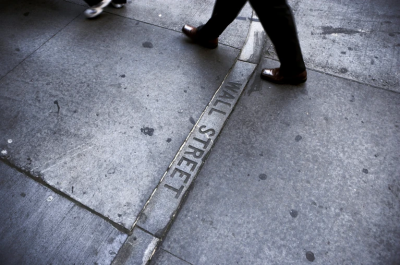
Researchers who report taking high levels of risk in their personal lives are more likely to see risk in their research.Credit: Mauricio Graiki/Getty
Scientists who think of their research as being high-risk are especially aggressive in their quest for funding, finds a survey of more than 4,000 US-based academics1.
Risk is a fundamental but understudied aspect of science, says lead author Kyle Myers, an economist and business-administration researcher at Harvard Business School in Boston, Massachusetts. “When economists think about science, they very quickly think about risk-taking,” he adds. The survey1 of 4,357 researchers was posted last December on the preprint server arXiv and not peer reviewed. Policy discussions, says Myers, tend to portray science as a system that discourages risk-taking, sacrificing the chance for high-impact discoveries and inventions that could benefit society.
Respondents were asked to rate, on a scale of one to ten, how risky they feel their current research is, and how they think their peers would perceive its riskiness. Averaging these scores gave each respondent an overall risk score. Less than 10% had an overall score indicating that their research was especially risky — a rating of 8 or higher. About half had a score higher than a 5.
They were also asked about risk-taking in their personal lives, a concept that could cover everything from extreme sports to stock-market investments. Finally, researchers were also asked whether they mainly generated theories and hypotheses, or tested existing ones.
Training: Persuasive grant writing
The survey found a strong link between the perceived risk of research and the total amount of time devoted to applying for grants. This trend could reflect the practical reality of trying to secure funds for work with an unclear pay-off, Myers says. “If you are doing more uncertain things, one could imagine that it’s harder to get funding. You have to convince peers that it’s a good idea,” he says.
Scientists who are willing to take risks in their research could make important discoveries, but they could also end up on a dead-end path, he explains. “High risk per se is not good. Ideally, science would be low-risk, high-impact.”
Enabling risk
Table of Contents
Recognizing the inherent challenges of pursuing science with unclear outcomes, the US National Institutes of Health established a ‘high-risk, high-reward research’ funding programme intended to support “exceptionally creative scientists” who propose “innovative and transformative research”. The current programme includes the NIH Director’s Pioneer Award, first established in 2004.
Collection: Funding science
“NIH is mindful that the biomedical research enterprise requires investments in far-reaching, bold endeavours that may take longer to pay off,” says Tara Schwetz, chair of the agency’s high-risk, high-reward research working group. “Making bold predictions is critical to biomedical research, and high-risk projects play an integral role in the NIH research investment.” The UK government announced a similar initiative in 2021, which was formally established in 2023. Its Advanced Research and Invention Agency funds high risk, high reward scientific research.
Such initiatives aside, funding agencies and review panels have a well-known aversion to risk, said Paula Stephan, an economist at Georgia State University in Atlanta. “More risky projects face higher barriers in terms of getting funding,” she says.
It’s important to note that ‘risk’ means different things to different researchers, Myers said. In fundraising, researchers might see inherent risk in any “soft-money” project funded by external grants and contracts in which the next round of support, including the principal investigator’s salary, is not guaranteed.
Even if a topic seems safe and predictable, researching it could feel like a high-wire act. “Risk in science isn’t just about the outputs, it’s also about the inputs,” says Myers.
Stephan suspects that researchers with uncertain funding might be less likely to pursue research with uncertain pay-offs. “My impression is that individuals in soft-money positions avoid risky research since they must pay their salary out of grants,” she says.
Economists are crucial for solving public health challenges
In a 2023 paper, Stephan and her colleagues cite the IceCube Neutrino Observatory2, built at the Amundsen–Scott South Pole Station in Antarctica in 2010 to observe the cosmos, as an example of a high-risk research project that eventually produced important results. The feasibility of the project was much in doubt when it was first proposed in 1987, but researchers were able to get it off the ground partly with National Science Foundation funds that were originally allocated for basic research into the properties of ice. Such approaches to funding can be especially useful for high-risk research, she says.
Personal risk
The survey found that researchers who reported taking high levels of risk in their personal lives were also especially likely to see risk in their research. Myers says that it’s possible that some people simply have an inflated sense of danger and daring in their lives and work, and it’s also probable that some scientists really do apply the same approach to risk inside and outside the laboratory. “When recruiting PhD students, you might want to find someone who is likely to take a good risk on their project,” he said. “But it’s unclear if that will translate into the way that they engage with their science.”

Economists and scientists: solve big societal problems by working together
The survey also found that researchers who said that they focus on generating hypotheses saw a higher level of risk in their work than did those who generally tested existing ones. Myers says that this probably reflects the inherent uncertainties in new ideas and the basic difficulty of assigning value to concepts that have not yet been proved.
Myers is a co-author of another survey, also posted as a preprint last December3, that applies more theories of economics to the concept of risk in science. Among other things, researchers were asked about how various parameters of a hypothetical project — including risk and grant length — would affect their research strategy. Academics with tenure showed an increased willingness to take more risks for longer grants compared with non-tenured researchers, suggesting that job security plays a part in decision-making.
In the big picture, science has room for all approaches to risk-taking, from the daring to the cautious, Stephan says. “Researchers who are more willing to embrace risk are more likely to be successful,” she says. “But, as a physicist told me about 35 years ago, there will always be room for ‘ditch diggers’ who follow up on the work of others.”
In addition to exploring risk in science, the first survey by Myers and his colleagues1 also covers trends in earnings and research productivity, finding that respondents, 57% of whom are tenured, expect to work roughly 50 hours a week, with an average annual income of US$150,000.
